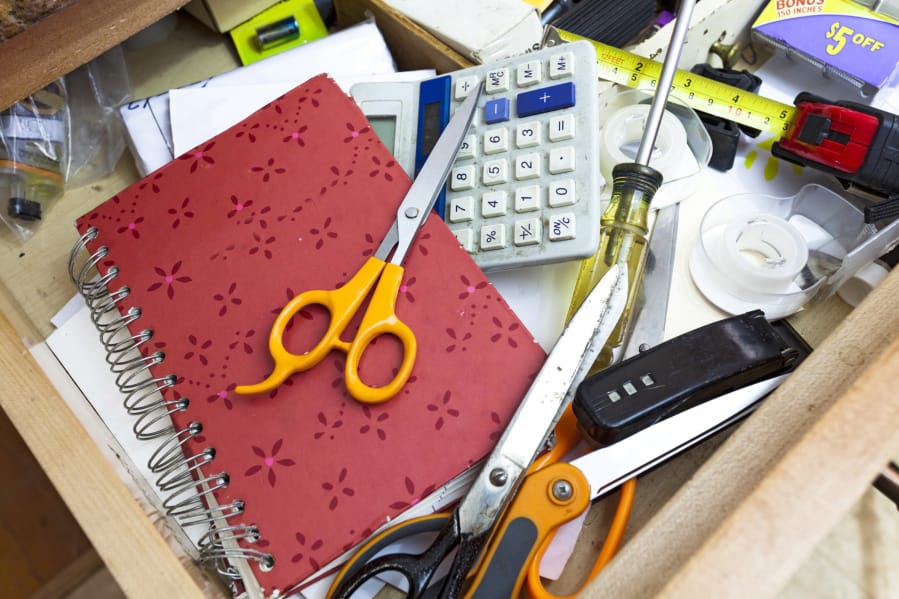If you’re a borderline hoarder with serious home organization issues in desperate need of some professional advice, follow The Home Edit on Instagram.
If you’re a neat freak with a decluttering obsession and an eye for design, follow The Home Edit on Instagram.
Either way, you won’t be disappointed.
Clea Shearer and Joanna Teplin started The Home Edit, a home organization business based in Nashville, Tenn., in 2015 after a mutual friend introduced them. After a four-hour lunch they left as business partners, Shearer says.
Whatever chemistry the pair has is clearly working. The company, which has five employees in addition to Shearer and Teplin, has completed dozens of projects in at least 13 cities, with plans to eventually have teams in Los Angeles and New York.
If your home is in dire need of organization, Shearer and Teplin say ease into it: “Always start with a drawer,” they say in a joint email. “It’s like practicing on a bunny slope before heading to the top of the mountain.”
When you’re ready to pursue loftier organizational goals, from playrooms to pantries, the organization experts have you covered there too. Here’s their advice.
Closet
1. Take the one-year rule seriously. If you haven’t worn it in the past year, you won’t. Donate it, or put it in a box of sentimental items if it has nostalgic value.
2. If your closet doesn’t have drawers, create some by using baskets. Shearer and Teplin suggest folding almost everything, even socks and underwear.
3. If your shoes don’t fit nicely, try keeping them in the boxes to optimize shelf space. This also keeps them protected from scuff marks and dust.
4. Use a good set of hangers and toss those that are mismatched. Your clothes will be properly cared for, and your closet will look refined and polished.
Entryway
1. Create a drop station to hold daily items: keys, mail, purse or wallet. Make sure to pick baskets and bins that will adequately hold everything.
2. Placing a bench with a basket by the front door gives guests a subtle hint to take their shoes off when they arrive.
Pantry
1. Think about how often you use each item. If you eat cereal every day, create a breakfast bin and keep it in easy reach. If you bake only twice a year, keep your baking bin at the top of the pantry to free up valuable real estate on lower shelves. Have at least a few large bins for bulk items.
2. For a busy lifestyle, Shearer and Teplin prefer open bins to closed canisters. Clear jars are perfect for storing dry goods and staple items. Use a divided turntable to ensure everything is easily accessible.
3. Segment the pantry into storage categories and keep categories general to ensure that every item will be accounted for. (For example: breakfast, dinner, snacks, sweets, cooking and baking.) This also makes it easier to unpack groceries.
Kids’ playroom
1. Kids grow out of toys as quickly as they grow out of clothes, so toss items no longer in use twice a year.
2. Pick storage solutions that are durable, easily accessible and easy for little hands to hold, like bins or soft drawers. For oversized or bulky items like stuffed animals, use a hamper.
3. Color-coordinate toys and books so children can find what they’re looking for. As a bonus, it turns the cleanup process into a game.
Laundry room
1. Place laundry products in bins and a couple of products in labeled jars for an organized, upgraded appearance.
2. Keep a bin for mismatched socks.
3. If you have the wall space, hang a peg rack with baskets and shelving for extra storage.
Linen closet
1. Roll towels instead of folding them to save space. No linen closet? Stack rolled towels on a bench, upright in a basket or in a rolling cart.
2. Store each set of sheets inside a corresponding pillowcase. They stay neatly contained, and it’s easy to identify the set you’re looking for.
3. Linen closets often double as storage for bath products, medicines and extra toilet paper. Using bins will help separate categories and keep shelves neat.
Garage
1. Organize your garage storage into categories. For example: games and activities, entertaining, pool floats, outdoor supplies, holiday, etc.
2. Choose stackable bins that fit the space, taking advantage of the dimensions.
3. If you have the wall space, add storage hooks for sporting equipment and outdoor games.
4. Consider a custom shelving and drawer system for tools.
Junk drawer
1. Acrylic trays with separate compartments work well for smaller items that could get lost in the mix, like paper clips, batteries and business cards.
2. Practice the 80/20 rule: 80 percent full, 20 percent open space. If you fill everything to the brim, you’ll be less likely to maintain the system.
Desk/office
1. Set up folders or boxes to categorize papers. For boxes or larger containers, organize and store visibly on a shelving system.
2. Highlight the items that make you happy on a daily basis. Keeping them in clear view helps inspire creativity and adds a personal touch.



